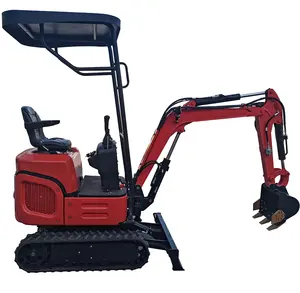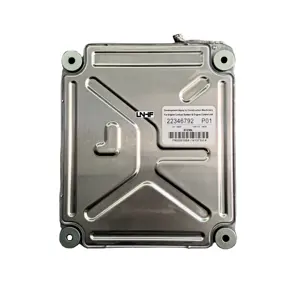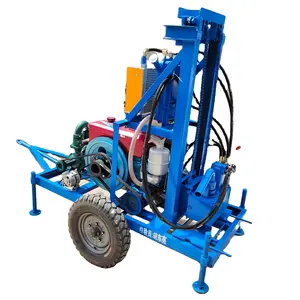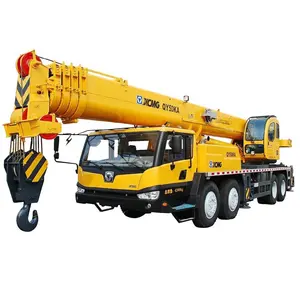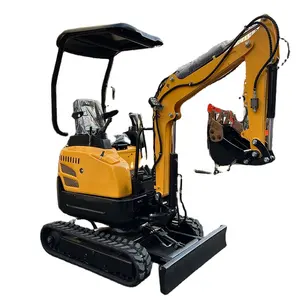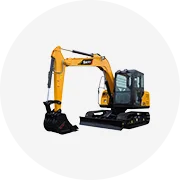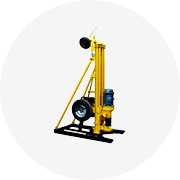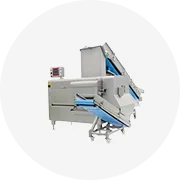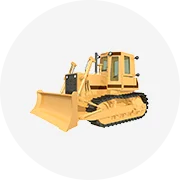Popular na sua indústria






China mini escavadeira preços Top Quality Hidráulica Small Digger Crawler import mini escavadeira Frete Grátis
Pronto para enviar
€ 2.691,46 - € 2.969,89
Pedido Mínimo: 1 Conjunto
Envio por peça: € 132,87






Rippa mini escavadeira de 3,5 toneladas rastreada mini escavadeira hidráulica fazenda mini escavadeira
€ 2.320,23
Pedido Mínimo: 1 Conjunto







Mini máquina de construção escavadora, mini escavadeira com fixação para venda com mini máquina escavadora
€ 92,81 - € 728,55
Pedido Mínimo: 1 Conjunto
Envio por peça: € 3.712,36







Chuangxin mini balde, fabricante chinês 3 min. 1.2ton 1 tonelada escavadeira, avião sem dentes
€ 86,84 - € 90,78
Pedido Mínimo: 1 Conjunto







Preço de fábrica Kubota Pequeno Mini Digger bagger 1ton 2ton Escavadeira 3.5ton mini pelle crawler mini escavadeira com EPA CE EURO 5
€ 1.670,57 - € 1.856,18
Pedido Mínimo: 1 Conjunto
Envio por peça: € 4.640,45







5 ton 6 ton escavadeira mini escavadeira preços com função balanço lateral
€ 5.094,29 - € 6.495,70
Pedido Mínimo: 1 Conjunto







Mini escavadeira multiuso com rotação 2023 graus, mini escavadeira KS10-8 KS12-8 KS12-9 com ce aprovado
€ 3.990,79 - € 4.454,83
Pedido Mínimo: 1 Unidade






Mini escavadeira de rotação 360 graus, escavadeira barata chinesa para venda
€ 824,15
Pedido Mínimo: 1 Conjunto
Envio por peça: € 0,00


















Mini máquina de demolição giratória, gráficos de demolição giratória para escavadeira de 1-3t com placa de montagem ms01
€ 464,05 - € 1.856,18
Pedido Mínimo: 1 Peça






Venda miniescavadeira LTMG de 3 toneladas, 5 toneladas, 6 toneladas e 7 toneladas com motor Kubota EPA importado
€ 10.357,48 - € 19.716,33
Pedido Mínimo: 1 Unidade
Envio por peça: € 3.526,74
Buscas Relacionadas:
mini escavadeira 2ton3 mini escavadeiramini escavadeira diretamini escavadeira ex45mini escavadeira 2tonxn08 mini escavadeira preçoultra mini escavadeiramini escavadeira 4t6ton mini escavadeiravender mini escavadeiramini escavadeira pequena4 ton escavadeira mini escavadeira6 ton komatsu escavadeira mini escavadeiraescavadeira usada mini escavadeiraescavadeira mini escavadeira






3 .5 Ton mini escavadeira agricultura ajudando máquina 8 ton escavadeira 7 ton rastreador ripper escavadeira rotator close cabbin Mini Dig
€ 2.691,46 - € 2.895,64
Pedido Mínimo: 1 Unidade






Mini escavadeira hidráulica 360 graus, mini escavadeira de 3 toneladas de rotação epa
€ 6.125,39 - € 8.167,19
Pedido Mínimo: 1 Conjunto






Alta taxa de recompra china fábrica personalização oem mini escavadeira hidráulica giratória grab balde
€ 464,05 - € 2.784,27
Pedido Mínimo: 1 Conjunto






Mini escavadeira giratória, de alta qualidade, máquina escavadeira grapple kx60 KX60-2 KX60-3 KX60-5
€ 464,05 - € 928,09
Pedido Mínimo: 5 Peças






Mini escavadeira barata xn08 xn12 xn15 xn20 strass com rotação de 360 graus
€ 3.525,82 - € 8.723,11
Pedido Mínimo: 1 Conjunto






Mini máquina escavadeira, gráfico de madeira/gravador de madeira/hidráulico rotação de escavadeira
Pronto para enviar
€ 742,48
Pedido Mínimo: 2 Conjuntos
Envio por peça: € 157,79






Venda miniescavadeira com polegar de rotação de 360 graus a diesel aprovada pela CE EPA
€ 2.784,27 - € 3.248,32
Pedido Mínimo: 1 Unidade






Homies escavadeira/miniescavadeira/trator/carregadeira de madeira rotativa hidráulica, garra para toras
€ 204,18 - € 232,03
Pedido Mínimo: 1 Peça






Sn35 3.5t china fonte hidráulica 360 graus rotação mini escavadeira para quebra pedras
€ 19.118,64
Pedido Mínimo: 1 Conjunto
Envio por peça: € 649,67






Boleo Mini Digger Retroescavadeira Balde Construção Farm 360 Graus Rotação Mini Escavadeira
€ 10.023,37
Pedido Mínimo: 1 Conjunto






Gráfico de registro hidráulico giratório da pedra gráfica da escavadeira para mini escavadeira
€ 928,09 - € 2.320,23
Pedido Mínimo: 1 Unidade






Preço da mini escavadeira da fábrica de 2 toneladas com boom giratório
€ 2.691,46 - € 3.573,15
Pedido Mínimo: 1 Conjunto






China Segunda mão elétrica CE/EPA Yanmar Kubota 1Ton 1,5 tonelada rebocável retroescavadeira reboque Tilt rotator China Mini escavadeira
€ 2.394,47 - € 2.737,87
Pedido Mínimo: 1 Conjunto
Envio por peça: € 3.625,12


Peças de construção para máquinas de construção, para wacker neuson mini escavadeira ez17
Pronto para enviar
€ 23,21 - € 32,49
Pedido Mínimo: 1 Peça
Envio por peça: € 8,16






360 rotativo Balde de Construção Máquinas de Terraplanagem Escavadeira Máquinas Agrícolas 0.5 Ton 1.0 Ton Mini Micro Casa
€ 2.041,80 - € 2.645,06
Pedido Mínimo: 1 Conjunto






Escavadeira GJRT usada rotador de inclinação hidráulica inclinada mini escavadeira rotador de inclinação
€ 9.280,89 - € 14.849,43
Pedido Mínimo: 1 Conjunto






Pinos e buchas da caçamba da máquina escavadora, cilindro hidráulico inclinado, rotador para miniescavadora
Pronto para enviar
€ 5.271,55
Pedido Mínimo: 1 Conjunto
Envio por peça: € 556.853,40






Weixiang Mini Escavadeira Hidráulica Rotativa Demolition Shear A Tesoura Escavadeira Especial Tem Lâminas De Liga Para Corte De Sucata
€ 1.856,18 - € 4.640,45
Pedido Mínimo: 1 Conjunto






Mini escavadeira 1ton 1.2ton 1.5ton barata, mini escavadeira com rotação de 360 graus, frete grátis
€ 1.670,57 - € 1.856,18
Pedido Mínimo: 1 Conjunto






Mini máquina escavadora giratória hidráulica, grafo de manuseio de resíduos gráfico com rotação
€ 278,43 - € 4.640,45
Pedido Mínimo: 1 Peça






Mini acoplador hidráulico giratório, máquina escavadeira de acoplamento rápido detalhes
€ 371,24 - € 742,48
Pedido Mínimo: 1 Conjunto






Suporte Técnico Balde De Escavadeira Rotativa Balde Inclinação Para Mini Escavadeira De 5 Ton
€ 185,62 - € 835,29
Pedido Mínimo: 2 Peças






China atacado distribuidores mini escavadeira grafo giratório hidráulico para grabling carvão
Pronto para enviar
€ 5.290,11 - € 5.475,73
Pedido Mínimo: 1 Conjunto
Envio por peça: € 46,41






Escavadeira pequena ce epa, mini escavadeira, micro escavadeira giratória de 1 tonelada 1.6 toneladas e 2 toneladas
€ 1.856,18
Pedido Mínimo: 1 Conjunto












Mini escavadeira chinesa 360 graus da rotação newtipo 1 tonelada para venda
€ 1.948,06 - € 2.691,46
Pedido Mínimo: 1 Conjunto






Log grapple mini escavadeira escavadeira hidráulica rotativa grapple
€ 1.392,14
Pedido Mínimo: 1 Conjunto






Escavadeira rotativa profissional Mini Escavadeira Pequena Múltiplos Especificações
€ 1.670,57 - € 13.921,34
Pedido Mínimo: 1 Conjunto
Principais categorias
Sobre mini escavadeira rotação
mini escavadeira rotação são de grande ajuda nos canteiros de obras. Eles são máquinas enormes que são utilizadas para transportar cargas volumosas durante a construção. mini escavadeira rotação são usados para carregar matérias-primas como detritos de demolição, cascalho, toras, areia, tijolos, etc. Eles têm excelente capacidade de carga . Sua necessidade de qualidade padrão. mini escavadeira rotação será cumprida por Alibaba.com.
mini escavadeira rotação são equipados com tecnologia desenvolvida de forma inteligente. Eles têm uma série de recursos operacionais para facilitar a facilidade de transporte. mini escavadeira rotação são fornecidos com duas rodas dianteiras e duas traseiras grandes. Como resultado, eles podem se mover rapidamente com cargas carregadas sobre eles. mini escavadeira rotação ajuda a reduzir o trabalho manual e aumenta a produtividade nos canteiros de obras.
Os carregadores são classificados em diferentes categorias com base em seus mecanismos e nas tarefas que executam. mini escavadeira rotação possuem caçambas ou garfos fortes e quadrados montados na frente na extremidade de dois braços. Essas estruturas semelhantes a baldes coletam substâncias soltas do solo. mini escavadeira rotação vêm com sistemas de controle adequados para gerenciar de forma inteligente os processos de carga e descarga. Alibaba.com permite que você descubra uma ampla gama de carregadores para escolher o necessário. mini escavadeira rotação.
Carregadores diminuem seus esforços quando se trata de carregar e transportar materiais de construção pesados. Encontre o mais adequado. mini escavadeira rotação em Alibaba.com com sua ampla variedade de carregadores. Aqui, todas as commodities estocadas são de lojas de fornecedores e fabricantes certificados. Afinal, todo cliente merece garantia garantida com o mérito das commodities.
Os carregadores são classificados em diferentes categorias com base em seus mecanismos e nas tarefas que executam. mini escavadeira rotação possuem caçambas ou garfos fortes e quadrados montados na frente na extremidade de dois braços. Essas estruturas semelhantes a baldes coletam substâncias soltas do solo. mini escavadeira rotação vêm com sistemas de controle adequados para gerenciar de forma inteligente os processos de carga e descarga. Alibaba.com permite que você descubra uma ampla gama de carregadores para escolher o necessário. mini escavadeira rotação.
Carregadores diminuem seus esforços quando se trata de carregar e transportar materiais de construção pesados. Encontre o mais adequado. mini escavadeira rotação em Alibaba.com com sua ampla variedade de carregadores. Aqui, todas as commodities estocadas são de lojas de fornecedores e fabricantes certificados. Afinal, todo cliente merece garantia garantida com o mérito das commodities.

